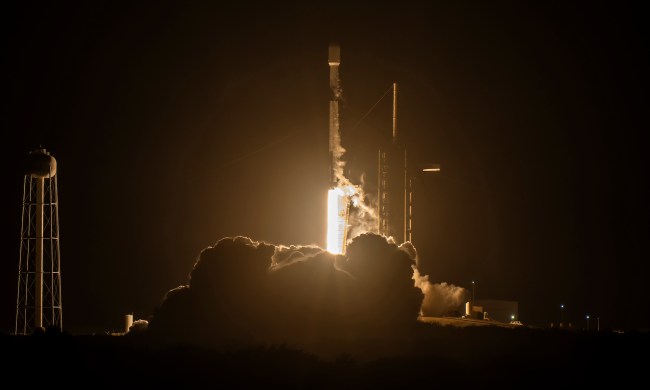SpaceX has been launching and landing rockets since 2015, though some of those early touchdowns didn’t go as planned and ended in a ball of flames.
These days, the landing process has been pretty much perfected, and on Tuesday evening, the spaceflight company achieved its 300th successful first-stage touchdown. SpaceX CEO Elon Musk congratulated his team for achieving the feat.
Tuesday’s mission to deploy 23 Starlink satellites in orbit got underway from the Kennedy Space Center in Florida at 6:17 p.m. ET. SpaceX live-streamed the milestone mission on social media:
Engines full power and liftoff! pic.twitter.com/FeW78mZio2
— SpaceX (@SpaceX) April 23, 2024
About eight minutes after launch, the Falcon 9’s first stage made a perfect upright landing on the Just Read the Instructions droneship stationed in the Atlantic Ocean. Watch the 41.2-meter-tall booster as it nails the 300th landing of a Falcon 9 booster:
Falcon 9’s first stage has landed on the Just Read the Instructions droneship, completing Falcon’s 300th landing! pic.twitter.com/1YHqiHWjkN
— SpaceX (@SpaceX) April 23, 2024
Landing the first-stage booster in this way allows SpaceX to operate missions at a much lower cost than if it had to build a new one for every flight. A higher launch frequency is also made possible. The company has built numerous Falcon 9 boosters that have flown multiple times over the years. Tuesday’s mission was the ninth flight for this particular booster, which previously launched Crew-6, SES O3b mPOWER, USSF-124, and five other Starlink missions.
The current flight record held by a single SpaceX rocket belongs to Booster 1062, which earlier this month launched and landed for a record 20th time.
SpaceX achieved its first booster landing in 2015 after suffering a number of mishaps where the vehicle landed too hard or fell over after touching down. The team reached 200 landings last June, and with SpaceX steadily increasing its launch rate, the 400th landing is likely to come around even more quickly.


